Creating Calm: Effective Strategies for Supporting Autistic Students
Understanding and Addressing School Anxiety in Autism
School anxiety is a common yet complex challenge faced by autistic children, impacting their ability to learn, socialize, and enjoy educational experiences. Recognizing the signs, understanding the triggers, and implementing targeted strategies are essential steps in creating a supportive environment where autistic students can thrive. This article explores evidence-based interventions, practical approaches for transitions, and the importance of collaboration among parents, educators, and professionals.
Recognizing Signs and Triggers of School Anxiety in Autistic Children
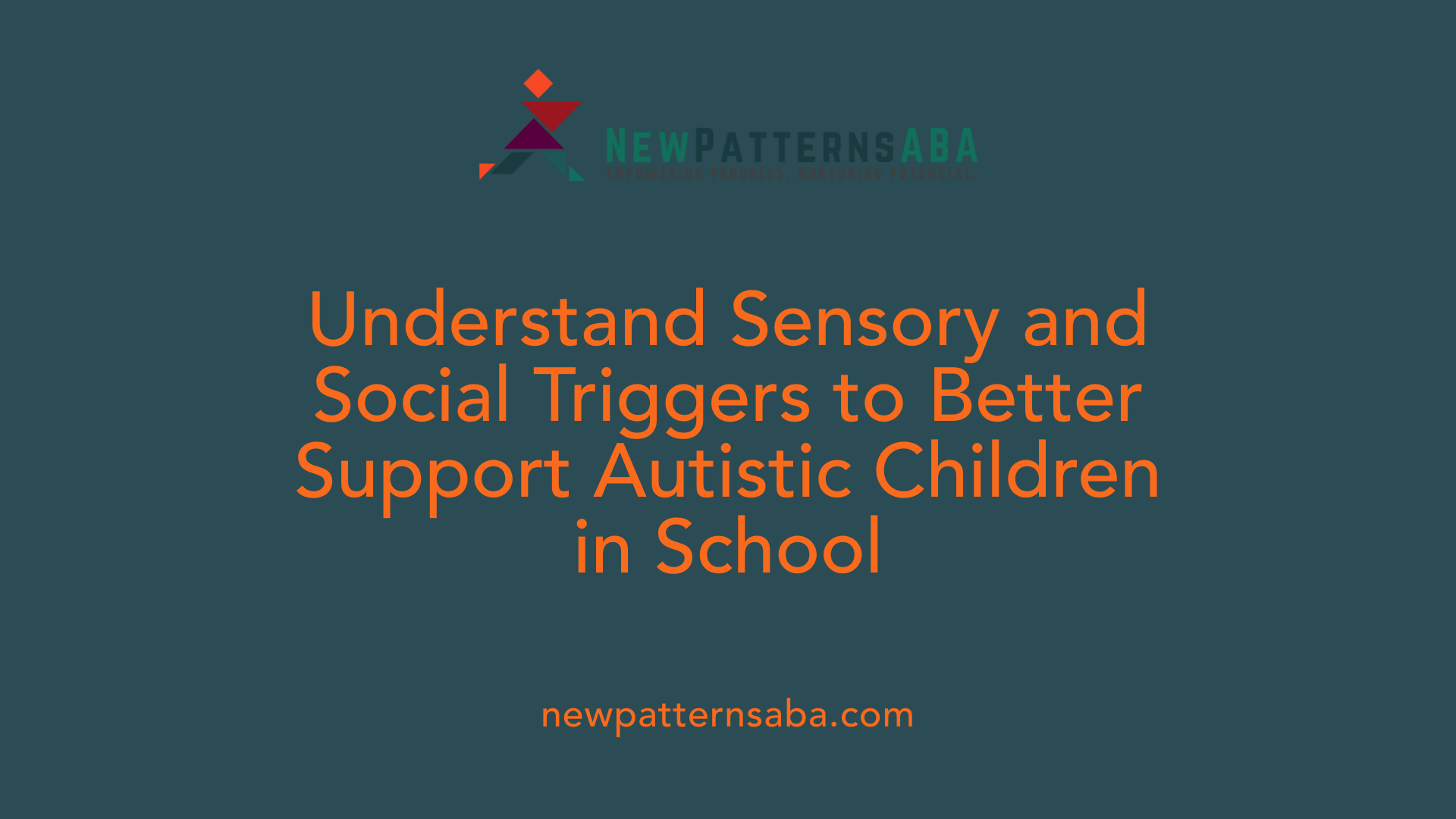
What are the common signs and triggers of school anxiety in autistic children?
Autistic children often exhibit specific behavioral signs that indicate they are experiencing anxiety related to school. These can include withdrawal from peers and activities, emotional outbursts such as meltdowns, and increased challenging behaviors. They might also show signs of difficulty sleeping or changes in eating habits, such as stomach aches or loss of appetite.
Physically, children may appear restless, fidgeting or displaying signs like sweaty palms and a rapid heartbeat. These physical symptoms are common indicators of heightened anxiety levels.
In addition to observable behaviors and physical signs, children might rely on certain coping mechanisms. They often seek reassurance from adults or use rituals and routines to feel more in control. Engaging in special interests or repetitive behaviors can serve as emotional anchors for anxious children.
Triggers for this anxiety are often linked to sensory sensitivities, such as loud noises, bright lights, or unpleasant smells, which can overwhelm their senses. Social difficulties, including trouble understanding social cues, fear of bullying, or challenges in making friends, also contribute significantly.
Fears of separation from caregivers, apprehension about academic performance, or unfamiliar routines can further elevate anxiety levels. Changes to the school schedule, classroom environment, or teaching staff—especially those not anticipated—may provoke distress.
Recognizing these signs and understanding their triggers can help educators and caregivers implement timely and effective support strategies. Collaborating with schools to develop visual supports, social stories, and gradual exposure therapies can mitigate the effects of anxiety. Monitoring and addressing sensory sensitivities, providing clear routines, and fostering a supportive environment are essential components of managing school-related anxiety.
With tailored interventions that address individual needs, autistic children can experience reduced anxiety, enabling them to engage more fully and enjoy their learning experiences.
Practical Strategies for Parents and Educators
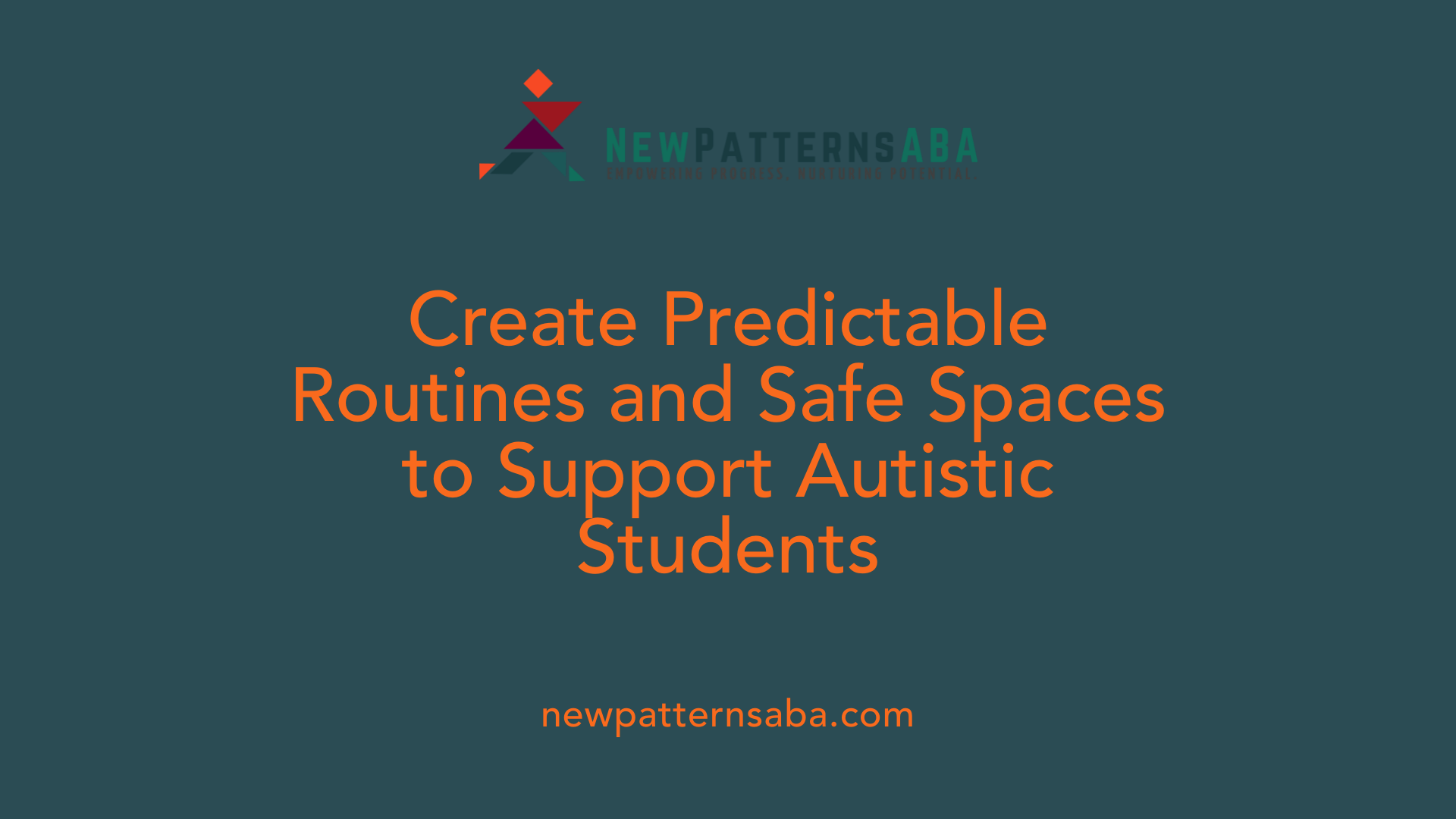
What strategies can parents and educators use to help autistic children manage school anxiety?
Supporting autistic children in managing school anxiety requires a combination of understanding, preparation, and specific strategies. These approaches aim to reduce uncertainty, foster confidence, and provide emotional support.
One effective method is creating predictable routines and visual aids. Visual supports like timetables, social stories, and picture schedules help children understand what to expect during their school day, which can significantly reduce feelings of confusion and fear. These tools serve as visual cues to guide children through daily activities and transitions.
Familiarizing children with the school environment before the start of the term is another helpful step. This can involve touring the school, meeting teachers, and exploring classrooms ahead of time. Such exposure makes the new environment less intimidating and helps children form positive associations.
Involving children in routine planning enhances their sense of control and confidence. For example, discussing daily schedules with them or letting them select some supplies can make them feel more prepared and less anxious.
Teaching relaxation techniques is also beneficial. Deep breathing exercises, muscle relaxation, and recognizing physical signs of anxiety—like sweating or fast heartbeat—enable children to self-regulate when they start feeling overwhelmed. Visual tools like the Zones of Regulation or the Incredible 5-Point Scale can support emotional awareness and control.
Designated safe spaces within the school are crucial. These are quiet areas where children can go to calm down if they feel overwhelmed. Staff awareness and accessibility of such spaces provide a reassuring safety net.
Staff training plays a vital role too. It’s important that teachers and school staff are knowledgeable about autism and how to support anxious students. Autism awareness training equips staff with strategies to create an inclusive, supportive environment.
Lastly, professional support outside school can be essential, especially for severe anxiety. Evidence-based therapies like adapted cognitive-behavioral therapy (CBT) are effective in helping children develop coping skills. In some cases, medication prescribed by a healthcare professional might be recommended to manage intense symptoms.
Collectively, these strategies foster a supportive environment where autistic children can navigate school more comfortably and develop resilience against anxiety.
| Strategy | Description | Benefit |
|---|---|---|
| Visual supports | Use of timetables, social stories, pictures | Clarifies routines, reduces surprise |
| School environment familiarization | Touring and exploring classrooms | Decreases fear of the unknown |
| Child involvement | Planning routines, choosing supplies | Builds confidence and control |
| Relaxation techniques | Deep breathing, recognizing physical signs | Empowers self-regulation |
| Safe spaces | Quiet areas for calming down | Reduces overwhelm |
| Staff training | Autism awareness and anxiety support | Ensures informed, supportive staff |
| Professional therapies | CBT adaptations, medication | Addresses severe anxiety |
Understanding the specific needs and anxieties of each child is essential. Collaborating closely with parents, teachers, and professionals creates a personalized support plan that can make a real difference in a child's school experience.
Supporting Transitions to Reduce Anxiety
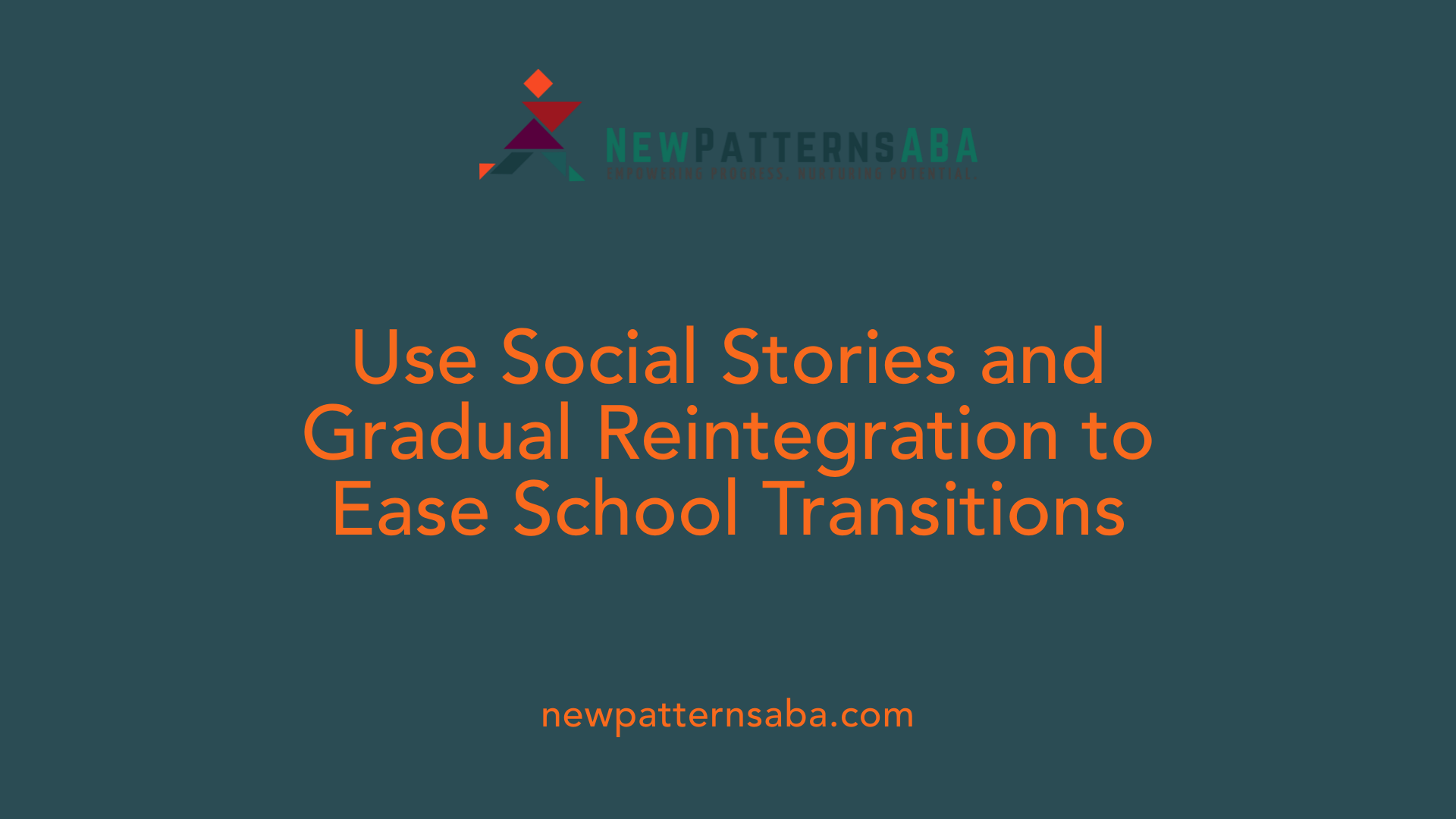
How can transitioning to a new school or grade help reduce anxiety in autistic children?
Transitioning to a new school or grade can be a challenge for autistic children, often heightening their anxiety. However, careful planning and supportive strategies can make these changes smoother and less stressful.
One effective approach is visiting the new environment before the official start. Familiarizing children with the new building, classrooms, and routines allows them to develop a sense of predictability and control. Using visual aids like social stories and visual schedules helps children understand upcoming changes, routines, and expectations. These tools serve as a visual guide, reducing feelings of uncertainty.
Another vital strategy is engaging the child in discussions about what to expect. Talking about new routines, teachers, and classmates helps to normalize the experience and provides a chance for children to voice concerns or ask questions.
Meeting teachers and peers early fosters a sense of trust and familiarity, which can ease social anxieties. When children meet their new teachers and some classmates beforehand, they are more likely to feel comfortable and confident upon starting school.
Creating sensory-friendly spaces and maintaining familiar routines in the new setting are crucial. These adjustments offer comforting environments where children can regulate their sensory sensitivities and take breaks when needed.
Using countdowns and social stories is particularly effective in preparing autistic children for transitions. A countdown calendar helps children anticipate and mentally prepare for the change, reducing uncertainty. Social stories provide step-by-step explanations of what will happen, addressing specific fears or concerns.
Supporting gradual reintegration after absences also plays a role in reducing anxiety related to transitions. For example, if a child missed school due to illness or other reasons, a phased return helps them re-establish routines and rebuild confidence.
Overall, these strategies foster a sense of preparedness and security, enabling autistic children to navigate school transitions more comfortably. The combined effect of familiarity, clear communication, and supportive environments significantly lessens anxiety, promoting a positive school experience.
Strategies for Supporting Transitions
| Strategy | Description | Additional Benefits |
|---|---|---|
| Visiting new school environments beforehand | Tour the school, classrooms, and facilities before enrolment | Reduces surprises and builds familiarity |
| Using visual aids like social stories and schedules | Visual tools explaining routines and upcoming changes | Eases understanding and anxiety reduction |
| Engaging children in discussions about upcoming changes | Talk about what will happen, answer questions | Promotes trust and emotional preparedness |
| Meeting teachers and peers early | Introduce the child to staff and classmates before start | Builds relationships and confidence |
| Maintaining routines and creating sensory-friendly spaces | Continue familiar routines, provide quiet areas | Supports sensory and emotional regulation |
| Using countdowns and social stories | Visual countdown calendars and explanatory stories | Helps anticipation and mental preparation |
| Supporting gradual reintegration after absences | Phased approach back to school after time away | Reduces overwhelm and re-establishes stability |
Understanding the importance of sustainable transitions, schools and parents can work together to create tailored plans that address each child's unique needs. Staff training on autism and sensory sensitivities, along with ongoing communication, are essential components of effective support.
Creating a supportive environment for school transitions not only alleviates anxiety but also encourages Autistic children to develop independence and confidence in new settings. Addressing these challenges proactively fosters a more inclusive and positive education experience.
Evidence-Based Interventions for Anxiety Reduction
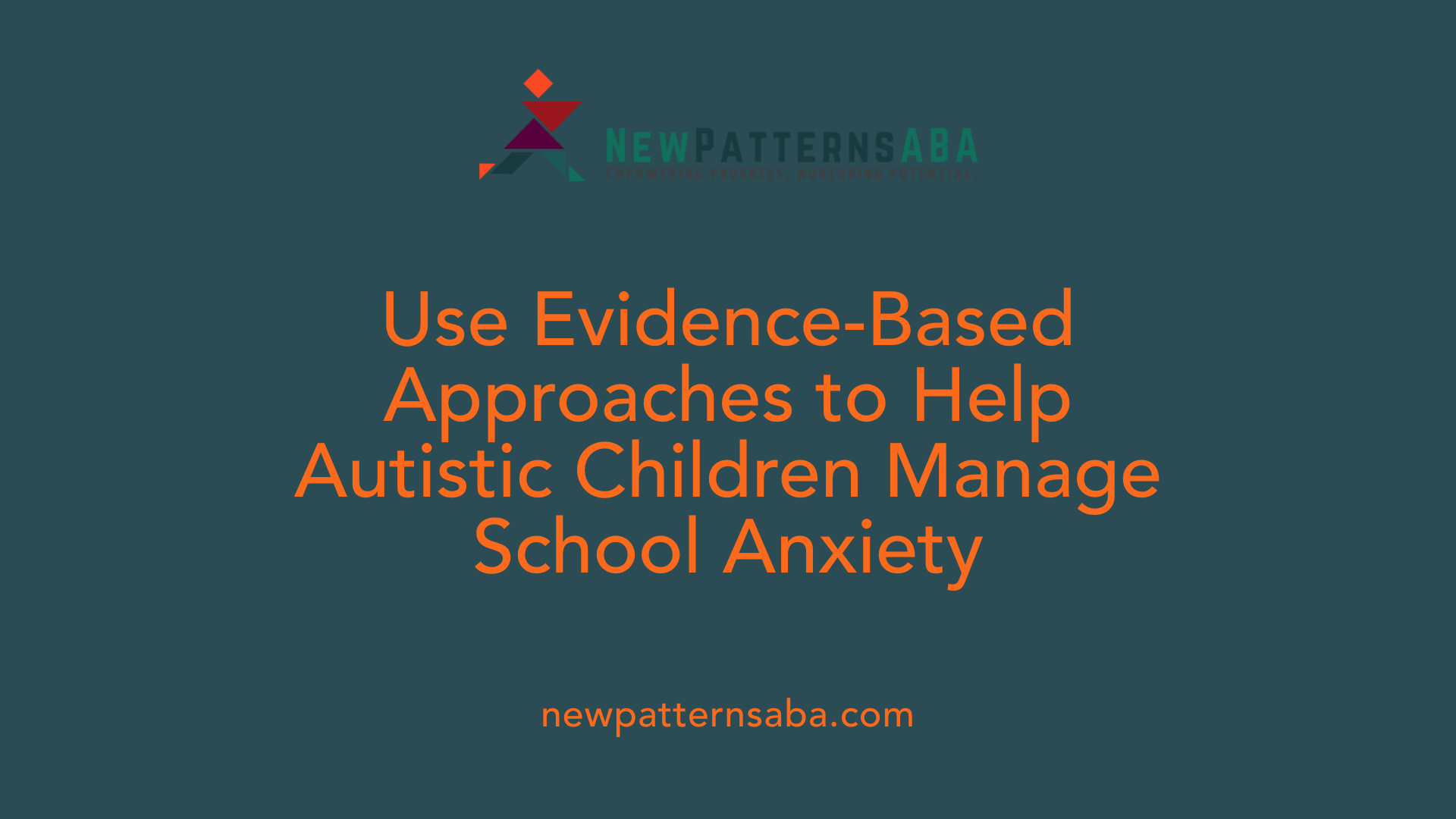
What evidence exists for effective interventions to reduce school anxiety in autistic students?
Autistic children and teenagers often struggle with high levels of anxiety that can significantly impact their learning and enjoyment of school. Fortunately, there is growing evidence supporting specific strategies and programs that can help mitigate these challenges.
One of the most well-supported approaches is cognitive-behavioral therapy (CBT). This therapeutic method involves teaching children to recognize and manage their anxiety symptoms through psychoeducation and exposure techniques. Studies demonstrate that CBT, especially when delivered with parental involvement and tailored to individual needs, can lead to meaningful reductions in anxiety symptoms among autistic students. These interventions often show moderate to high effect sizes, indicating a strong impact on alleviating anxiety.
School-based programs also play a vital role. The "Facing Your Fears in Schools" program is an example of a structured CBT-inspired intervention designed specifically for schools. It involves multiple sessions aimed at helping children understand their fears, develop calming strategies, and gradually face anxiety-provoking situations. Similarly, curricula like TEACCH and the Incredible Years Teacher Autism program focus on social-emotional skills, routines, and behavioral strategies that support emotional regulation.
In addition to direct therapy, environmental modifications and supports are crucial. Utilizing visual supports, social stories, and apps can help children understand routines, manage transitions, and reduce uncertainty — key factors in school anxiety. Sensory accommodations, such as creating sensory-friendly spaces, also help children feel more comfortable in the school environment.
Assessment tools like the Spence Children’s Anxiety Scale (SCAS) and the Screen for Child-Related Anxiety Disorders (SCARED) are commonly used to identify anxiety symptoms. However, their validity for children with ASD remains an area for further research. Tailoring assessments to be ASD-specific can enhance detection and intervention planning.
Overall, the combination of evidence-based therapies, environmental supports, and tailored assessments demonstrates a comprehensive approach to reducing school anxiety. Multiple studies have reported improvements with these strategies, showing that targeted interventions can make a significant difference in the school experiences of children with autism.
The Role of Support and Collaboration
Why is regular communication between parents, teachers, and mental health professionals vital?
Regular conversations among those involved in a child's education and care ensure everyone shares observations and approaches. This dialogue helps identify early signs of anxiety and tailors interventions effectively. Parents can update educators about specific triggers or successful coping strategies that work at home, while teachers provide insight into classroom behaviors and responses. Mental health professionals can offer guidance on managing anxiety and suggest appropriate therapies. Consistency in communication fosters trust, making it easier to adapt support as the child's needs evolve.
How can personalized education and support plans improve outcomes?
Developing individualized plans like IEPs (Individualized Education Programs) or EHC (Education, Health and Care) plans allows tailored accommodations. These might include sensory breaks, visual supports, social skills training, or adjusted routines. Such plans address the child's unique triggers, build on their strengths, and promote a sense of safety and predictability. Regular review ensures strategies remain relevant and effective, reducing anxiety linked to unfamiliarity or overwhelming environments.
Why is consistent implementation of strategies important?
Once specific strategies are chosen, consistent application is crucial. Variations in implementation can cause confusion or frustration for autistic children and weaken the intended benefits. Staff training ensures everyone understands and applies these methods uniformly — whether it's using visual schedules, calming techniques, or setting up a safe space. Consistency reinforces the child’s routines, decreases unpredictability, and helps solidify new coping skills.
How does creating an inclusive, understanding school environment help reduce anxiety?
A school culture grounded in autism awareness reduces stigma and promotes empathy among students and staff. Training sessions for teachers and staff build understanding of sensory sensitivities, social understanding, and anxiety symptoms. Inclusive activities foster peer acceptance and support, preventing social isolation which can heighten anxiety. When schools prioritize understanding, autistic children feel more comfortable and respected, leading to improved social and emotional well-being.
Why involve children in planning and decision-making?
Engaging autistic students in choices about their support fosters autonomy and confidence. Using visual tools or social stories, children can voice their preferences for routines or calming strategies. This involvement helps them build self-awareness about their anxiety triggers and coping methods. When children participate in planning, they are more likely to feel empowered and motivated to utilize strategies, making interventions more successful.
| Support Area | Key Actions | Benefits | Details |
|---|---|---|---|
| Communication | Regular meetings, updates | Early identification, tailored strategies | Builds a shared understanding of progress and challenges |
| Personalized Plans | Developing IEP/EHC plans | Customized support, focus on strengths | Incorporating sensory needs, routines, social skills |
| Strategy Implementation | Staff training, routine checks | Consistency, reinforcement of coping skills | Ensures interventions are applied uniformly |
| Inclusive Environment | Autism awareness training, activities | Reduces stigma, promotes acceptance | Fosters a supportive school culture |
| Child Involvement | Planning, visual tools | Fosters autonomy, improves engagement | Empowers the child, builds confidence |
In summary, collaborative efforts among parents, educators, and professionals are fundamental in creating a nurturing environment for autistic children experiencing school anxiety. Through consistent support, personalized planning, and inclusive practices, children can better manage their fears, thrive academically, and develop resilience for the future.
School Environment Adaptations and Teacher Training
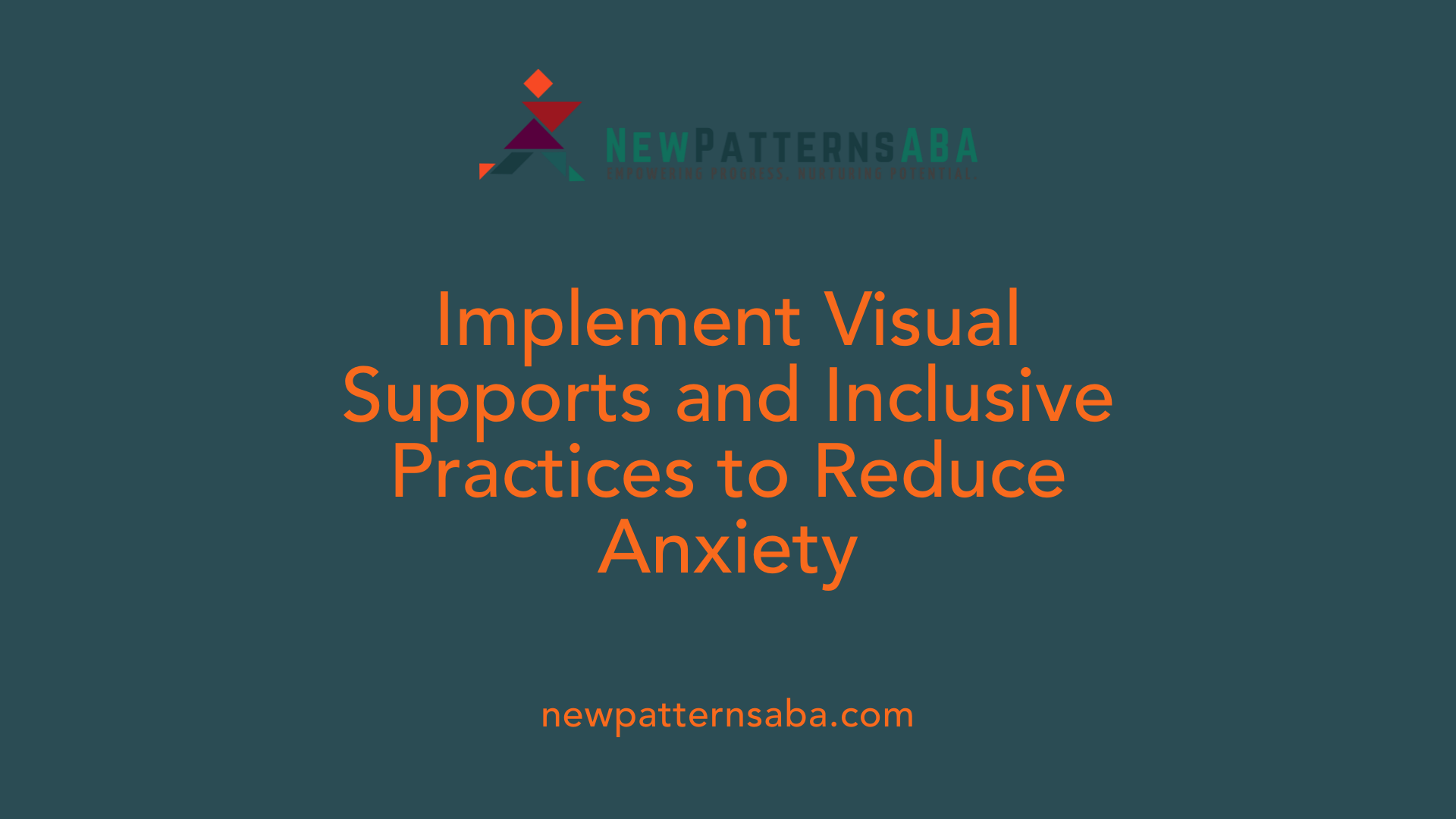
How can schools support autistic children with school anxiety?
Supporting autistic children who experience anxiety requires a combination of environmental adaptations and informed teaching practices. One effective approach is to create a sensory-friendly environment within the school. This can involve reducing common sensory triggers such as loud noises, bright fluorescent lights, or overwhelming visual stimuli.
Implementing designated quiet zones or sensory spaces offers children a safe place to calm down and regulate their emotions. These areas are equipped with supportive tools like soft lighting, calming visuals, or sensory toys, helping children regain control when feeling overwhelmed.
Training school staff in autism awareness and anxiety support techniques is crucial. Teachers and support staff should learn to recognize anxiety signs specific to autistic children, such as rituals, avoidance behaviors, or physical symptoms like sweating or rapid heartbeat.
Equipping staff with strategies like visual supports—such as picture schedules, social stories, and visual timers—can help children understand routines and reduce uncertainty. Structured routines give predictability and comfort, which are reassuring for children with autism.
Creating an inclusive and understanding school culture is equally important. Promoting autism awareness through professional development and peer education encourages empathy and acceptance among students. This community-minded approach helps diminish social barriers and fosters a supportive environment.
In summary, supporting autistic students involves multiple layers of adaptations—modifying the school environment, training staff in supportive techniques, and cultivating a culture of understanding. These measures make schools safer, more accessible, and more engaging for children with autism, ultimately enhancing their learning experience and emotional well-being.
Strategies in practice
| Strategy | Description | Benefits |
|---|---|---|
| Sensory-friendly environment | Reduce noise, lighting, and visual clutter | Less sensory overload, calmer children |
| Quiet zones & sensory rooms | Safe spaces for regulation | Emotional regulation support |
| Staff training | Autism and anxiety support techniques | Better understanding and response |
| Visual supports | Picture schedules and social stories | Increased predictability |
| Structured routines | Consistent daily plans | Reduced anxiety about transitions |
| Inclusive culture | Autism awareness initiatives | Peer support and acceptance |
Fostering Resilience and Ongoing Support
Reducing school anxiety in autistic children requires a comprehensive, collaborative approach that combines evidence-based interventions, environmental modifications, and proactive communication. By recognizing signs early, implementing targeted strategies, and fostering understanding within the school community, we can create a supportive environment where autistic students feel safe, accepted, and empowered to succeed. Continuous assessment, professional support, and family involvement are vital to addressing evolving needs and helping children build resilience to navigate the challenges of school life.
References
- Anxiety at school: autistic children and teenagers
- What can I do if my child won't go to school?
- What Does Anxiety Look Like for an Autistic Student at ...
- School Stress and Emotional Based Avoidance
- Comparing the Effectiveness of Two School-Based ...
- Back to school: Tips to help autistic kids adjust to the new ...
- Assessment and Treatment of Anxiety in Children with ...
- Evidence-Based Strategies to Reduce Anxiety in Students ...
- Anxiety at school: autistic children and teenagers
- Managing anxiety in children with autism






